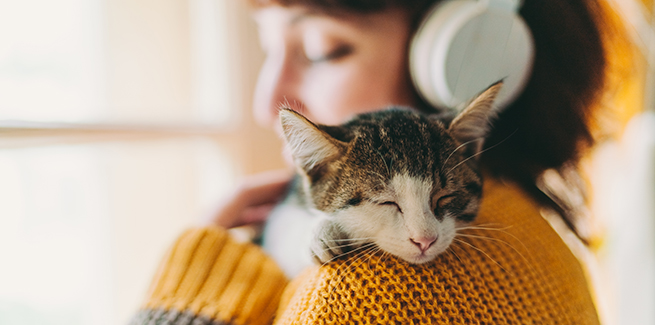According to study, there are 5 types of cat-owner relationships

The researchers set out to identify the different types of relationships that cats and owners establish with each other by using human attachment and social-support theories to define relationship and bonding styles.
The researchers analyzed data collected on 3,994 responses to a four-part, online survey that included questions about owners’ caregiving style, the emotional basis of the owner-cat relationship, owners’ ability to provide social support to the pet, and owners’ perceptions of how the cat perceived them as a source of security.
Based on that data, the authors identified five distinct relationship types between cats and their owners. NEWStat contacted one of the researchers, Daniel Mills, PhD, DECAWBM, CCAB, professor of veterinary behavioral medicine at UL, to find out more. Mills described the five relationship types for NEWStat:
- Open relationship: The owner is “emotionally distant” from their cat, who’s aloof and rarely hangs out with them. “In this case, the bond from owner to cat is quite weak, and this is similar between cat and owner,” Mill said.
- Remote association: “Both cat and owner do their own thing, and the cat would probably be just as happy living as a farm cat.” Mills called this a weak bond on both sides.
- Casual relationship: “The owner doesn’t love their cat as part of the family, although the cat is pretty sociable with everyone, including strangers,” Mills said. Here, there’s an affectionate bond between owner and cat, but it’s not as intense as in the codependent relationship.
- Codependent: “The owner adores their cat, who wants to be around them as much as possible and may meow a lot when they leave the room. So here we would say the owner has a very strong emotional bond and so does the cat.”
- Friendship: “The owner loves and may talk to the cat, but the cat is also happy to be affectionate with others and is not clingy,” Mills said. In this case, the owner bond is quite intense, but the cat’s may not be.
For any relationship to be relatively stress free, Mills said it’s important that the bonds are compatible: If an owner wants a cat who behaves like a dependent child, it’s important to the success of the relationship that the cat act like that. If the cat is more naturally independent, there’s likely to be trouble.
“We suspect that cats—like many other species—may adapt to the reinforcement they receive,” Mills said. Essentially, they go along to get along. The trouble starts when owners misread their cat’s needs, which “can give rise to problems ranging from aggression to overdependence.”
Mills said in future studies, he’d like to focus on which relationship types are associated with particular behavioral problems.
“They’re very, very realistic,” Carney said. “I would have used them to describe the relationships I’ve seen between cats and their owners.”
Carney agreed that cats adapt to the reinforcement they receive, and said a large percentage of the behavioral problems she sees in cats are a result of the owner ignoring the cat until the cat responds by what the owner perceives as acting out. “The cat’s not necessarily misbehaving,” Carney said. “To the cat, it’s actually very normal behavior. It’s just a behavior that the owner doesn’t find appropriate.”
Carney would add another cat-owner type: The helicopter cat owner.
She likens them to helicopter parents, who constantly hover over their children without giving them personal time, and says that’s not a good match for most cats: “Cats like reasonably intense, short-term interactions, both with humans and with other cats.” Helicopter cat owners “always want to be in contact,” which can stress out the cat, which, in turn, can lead to health problems.
Carney said that, contrary to popular belief, cats aren’t antisocial: “They’re very social when they’re with other cats. But their interactions are of a short duration. And that’s how they view appropriate interactions with humans.”
Mills said a better understanding of the relationship between owner and cat can help veterinarians frame the healthcare messages they give to owners. “For example: In a codependent [relationship], you may have to be very sensitive to the owner’s needs as well as the cat’s, whereas, in a remote relationship, the owner is less emotionally invested.” And possibly less likely to bring the cat in for regular visits, which might mean being more proactive about checkup reminders.
Mills said there’s a takeaway for cat owners, too: “Make sure your needs in a cat match the cat’s personality.”
Photo credit: © Martin-dm / E+ via Getty Images Plus



